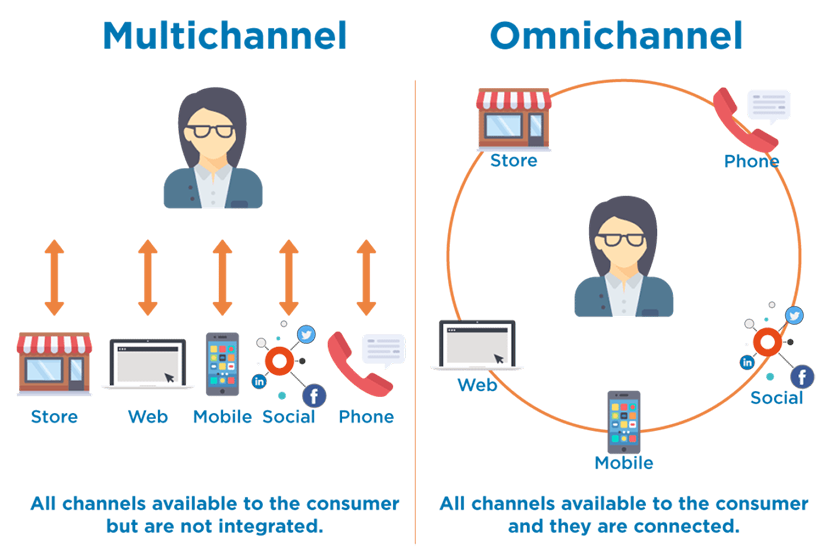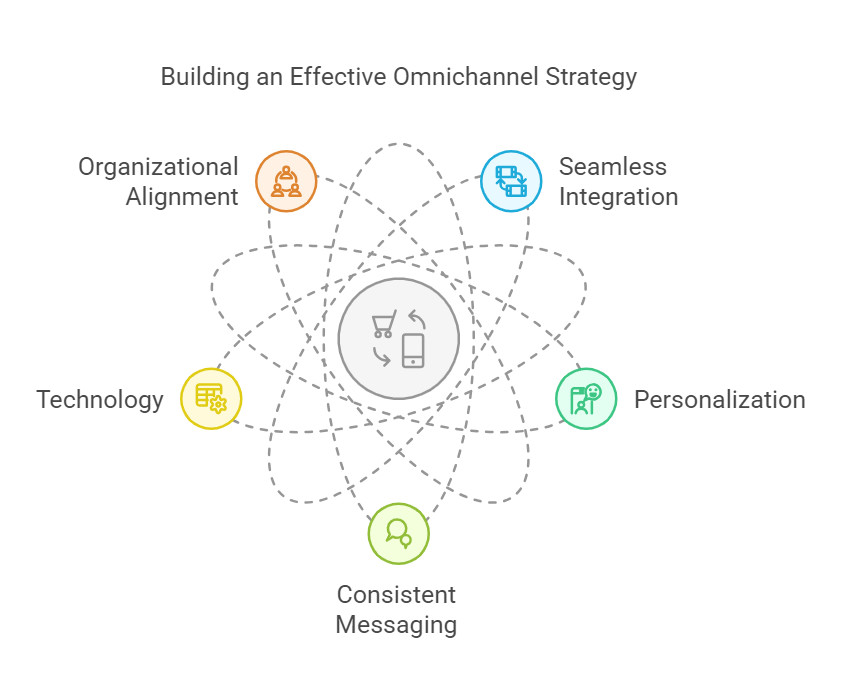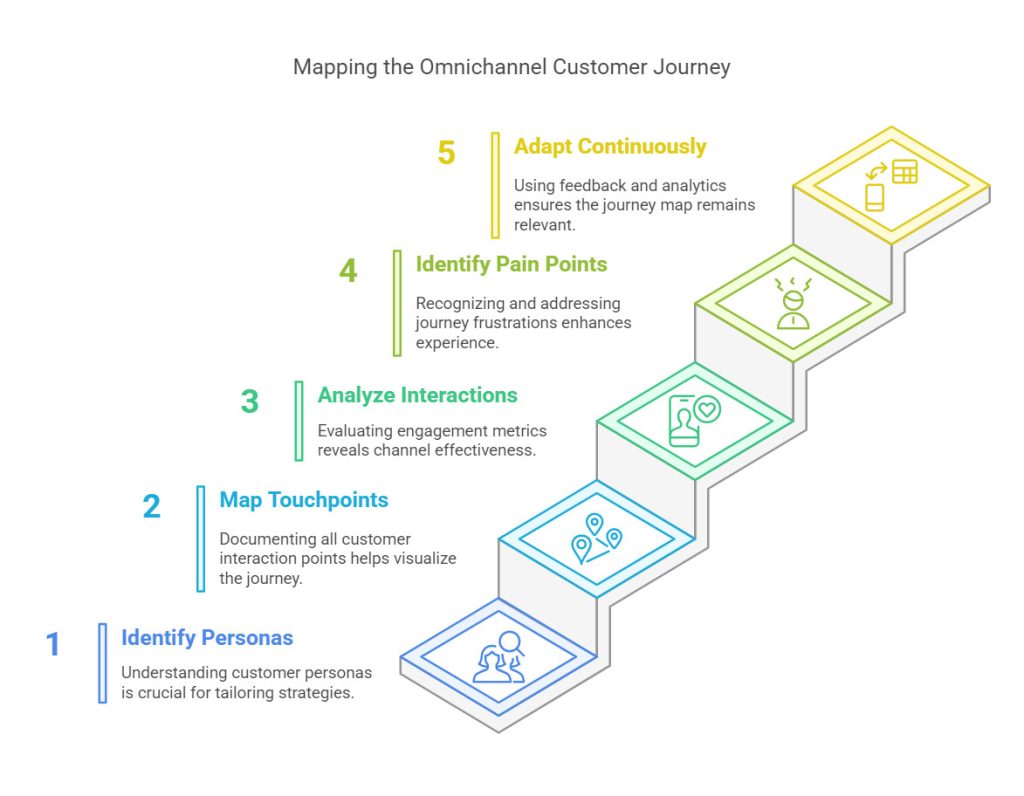- Research platform
Sources of information
Data analysis
Actions
- Solutions
For whom
Problems / Issues
- Materials
Materials
- About us
About us

Today, the market is changing fast. Knowing omnichannel is key to improving the customer experience and ensuring seamless customer interaction. Omnichannel strategies matter to businesses as they redefine engagement methods. Consumers want a smooth journey, requiring brands to link their channels. Here, we’ll explore how to build an effective omnichannel customer experience.
Identifying key parts of a successful strategy matters. We will also touch on personalization techniques that aid in navigating how consumers interact. Also, we will discuss issues that arise when trying to implement omnichannel solutions. Trends are shaping how customers engage now and in the future. After reading, you will better understand how to create a seamless customer journey that not just meets consumer expectation, but also exceeds them.
The omnichannel customer experience means a complete approach to connect with customers. All channels must offer a consistent and unified interaction. Regardless of the platform they choose, customers benefit from more touchpoints. These can include websites, mobile apps, social media, and physical stores.
A seamless connection across channels is vital for a strong omnichannel customer experience. If experiences are disjointed, customers become frustrated. This often leads to lost loyalty. Research shows that 73% of consumers like to engage with brands on multiple channels. This proves that businesses must adopt an omnichannel strategy.
Nevertheless, creating a true omnichannel experience has challenges. Many organizations face data silos. When customer information stays fragmented across systems, a full view of the customer's interactions slips away. A reported 60% of companies indicate that marketing teams don’t align with sales teams. This misalignment can hurt customer experience delivery.
To deal with these issues, businesses need to combine data and ensure effective communication between channels. A coordinated approach leads to a more seamless and personal experience for customers. It creates satisfaction and builds loyalty in the long run.
Overall, grasping the fundamental ideas behind omnichannel customer experience is important. Businesses looking at enhancing customer happiness should focus on this. In the next section, we will discuss the benefits of a strong omnichannel strategy.
An effective omnichannel customer experience provides multiple benefits that enhances how businesses communicate with customers. By integrating interactions across various channels, companies can improve customer engagement and build loyalty.
One immediate benefit of the omnichannel approach is increased customer satisfaction. Streamlined interactions and consistent experiences make navigating services easier for customers on any platform. This increased satisfaction promotes customer loyalty. Studies show customers exposed to personalized experiences are 80% more likely to buy again.
Enhanced conversion rates also stand as a major advantage of a solid omnichannel strategy. Reducing friction in customer interactions helps eliminate barriers that deter buyers. When customers can move seamlessly from browsing online to in-store purchases, their chances of completing transactions rises. This ultimately boosts sales.
Additionally, businesses gain valuable insights into customer behaviors through omnichannel interactions. By monitoring how customers engage with their brand, organizations collect crucial data. This information helps shape their strategies and tailor offerings effectively. A comprehensive understanding of preferences leads to targeted marketing campaigns, as 86% of customers say personalization greatly impacts their purchase choices.
Furthermore, companies that successfully execute an omnichannel customer experience attain a vital competitive edge. As consumer expectations change, businesses that focus on seamless interactions can better retain existing customers and attract new ones. A strong brand reputation develops by consistently exceeding expectations, which builds trust and fosters long-term relationships.
In conclusion, the benefits of an omnichannel customer experience are broad and wide, spanning from raised satisfaction and loyalty to improved conversion rates and deeper customer insights. As we move toward the key parts of an effective omnichannel strategy, it’s important to think about how those benefits can be maximized through the right technologies and approaches to enhance the customer's journey.
Customer satisfaction is a cornerstone of any successful business. When customers are happy with a product or service, they are more likely to become loyal customers, recommend the brand to others, and provide positive feedback. Conversely, dissatisfied customers can lead to negative reviews, lost sales, and a tarnished reputation.
In today’s competitive market, customer satisfaction holds more weight than ever. With the rise of social media and online reviews, customers have a powerful platform to share their experiences. A single negative review can deter potential customers, while a positive review can attract new ones.
To achieve high customer satisfaction, businesses must focus on providing a seamless omnichannel customer experience. This means ensuring that customers can interact with the brand across multiple channels, including physical stores, websites, mobile apps, and social media, and receive a consistent and personalized experience. By meeting and exceeding customer expectations across all touchpoints, businesses can foster loyal customers and enhance their overall customer experience.
Creating a successful omnichannel strategy enhances customer experience. Businesses must focus on many critical components. These elements form a solid foundation for effectively integrating various channels for a seamless journey.
As we dive into the key components of a solid omnichannel strategy, it’s clear that a coordinated approach is essential for meeting rising consumer expectations. Nevertheless, putting such an experience into place comes with challenges, which we will look at in the next section.

Creating an omnichannel experience meets changing customer expectations, yet it faces many challenges. The biggest issue is fragmented customer data. When information lies across different platforms, it's hard to build a full understanding of each customer. This fragmentation leads to poor service, making it tough to track customer interactions.
Inconsistent messaging makes the omnichannel customer experience even harder. Customers look for a unified voice from brands, no matter what platform they use. Silos in organizations increase the risk of conflicting messages. This can confuse customers, leading to frustration and harm to brand loyalty.
Organizational silos block the ability to meet customer needs well. Marketing, sales, and service departments have different goals and metrics. This disconnect causes disjointed experiences for customers who encounter multiple aspects of the business. When teams don't work together, customers notice.
Technological constraints are a big hurdle too. Many firms rely on outdated systems that can't meet the demands of a new omnichannel strategy. Old tech limits data sharing, real-time analytics, and seamless cross-channel integration, which hurts a brand's ability to offer a good customer experience.
Also, customer privacy is critical today. As businesses gather more data for enhancing customer experience, they must also deal with complex rules about data privacy. Customers see how their information is used and any mistakes can erode trust, leading customers to think twice about sharing their data.
Overcoming these challenges matters for organizations working to create smooth customer journeys. Delving into omnichannel customer experiences unveils how personalization can help businesses meet individual needs. Understanding each unique customer's preferences will result in a better experience.
Customer expectations keep changing. Personalized communication plays a key role in omnichannel experiences. Businesses that match their messages to what individuals want tend to gain better engagement and loyalty, turning a satisfied customer into a loyal customer. Studies show 80% of consumers tend to buy more when brands personalize the experience. Thus, personalization is vital for a smooth customer experience across all channels.
Smart use of customer data helps tailor interactions that align with different customer profiles. Brands that utilize customer insights like purchase history, browsing habits, and demographics can send messages and deals that resonate with interests. By analyzing past behavior with algorithms, brands recommend products or services, making the offers seem relevant to each individual. This data management boosts customer experience and increases sales through pinpointed marketing.
Additionally, responsiveness in customer engagement is important for effective omnichannel personalization. Quick reactions to customers’ changing needs and preferences keeps a company ahead. Automation and AI tools assist brands in adjusting strategies based on current data, allowing them to connect with customers at the perfect moment. This approach can turn standard interactions into significant experiences that deepens customer connections. Maintaining consistency across all points with ongoing feedback enhances the effectiveness of personalization in omnichannel strategies.
As firms work to tackle difficulties in creating a full omnichannel experience, focusing on personalization is vital for navigating complicated customer journeys. Next, we will delve into mapping the omnichannel customer journey, which highlights how businesses can visualize and improve their interactions across different platforms.
Mapping the omnichannel customer journey is key for businesses. It helps them optimize the unique experiences customers have. This journey is not simple. It’s complex and affected by various interactions across different channels. Properly mapping this journey requires some necessary steps to ensure businesses can meet customer expectations.
By thoughtfully mapping the omnichannel customer journey with these steps, businesses create a more unified experience that fits different customer needs. Ongoing optimization based on insights guarantees companies enhance specific interactions, which boosts customer satisfaction.
Looking ahead, knowing the new trends in omnichannel customer experience remains crucial for staying competitive. Grasping where the industry is moving will help organizations adjust their strategies to meet changing customer expectations.

Understanding how customers interact with a brand and identifying areas for improvement is crucial. Measuring customer experience involves several key metrics that provide valuable insights into customer behavior and preferences.
By leveraging these metrics, businesses can gain a comprehensive understanding of customer behavior and make data-driven decisions to enhance the customer experience.
Several brands have set the benchmark for successful omnichannel strategies, providing a seamless customer experience that others can learn from.
These brands demonstrate the importance of a seamless omnichannel customer experience and the significant benefits it can bring, from increased customer satisfaction to higher sales.
Implementing a successful omnichannel customer experience strategy requires the right tools. Here are some essential tools that can help businesses achieve this goal:
By leveraging these tools, businesses can provide a seamless and personalized customer experience, ultimately driving customer satisfaction and loyalty.
Many businesses work to create seamless experiences on multiple channels. The future of omnichannel customer experience will receive influence from key trends. These trends promise improved customer interactions and emphasize data-driven methods to enhance overall experiences.
One significant trend is the growing use of artificial intelligence for personalization. AI tools let brands examine large amounts of data. This analysis leads to tailored suggestions and live engagement techniques. Such personalization helps companies foresee customer needs. This, in turn, drive satisfaction and builds loyalty.
Emerging technologies also enhance the omnichannel experiences. Innovations like augmented reality and virtual reality bring customers immersive experiences. For example, retailers use AR so customers can see how products fit into their spaces or routines, whether they are shopping online or in a physical store. This enhances shopping and lowers return rates.
Focusing on customer feedback drives continuous improvement for businesses. Companies use many channels to gather feedback from users. Social media, surveys, and in-app engagements help here. This information refined current services and supports the creation of new initiatives to meet customer needs. Integrating feedback into strategies lets firms stay responsive to changing customer expectations.
As these trends develop, organizations leveraging AI, investing in new tech, and prioritizing customer feedback will position themselves for exceptional omnichannel customer experiences. These experiences encourage lasting relationships and stimulate growth in the market.
In conclusion, the role of an omnichannel strategy in boosting customer experience is crucial. This article looked at how grasping the details of omnichannel customer experience gives businesses the chance to craft a seamless and cohesive customer journey. By utilizing omnichannel methods, companies can build loyalty and increase engagement, helping them compete in the current market.
We analyzed vital parts of a strong omnichannel strategy and pointed out some challenges businesses face when implementing it. Focusing on personalization in these journeys helps brands meet customer needs, leading to better satisfaction. Furthermore, being aware of trends is key to staying relevant and competitive.
Now is the moment for you to put these insights to use and change your customer interactions into a remarkable omnichannel experience. Adopt this strategy to guarantee your customer's journey is rewarding and consistent across all channels. Take steps toward enhancing customer experience today—your customers will appreciate it!
Copyright © 2023. YourCX. All rights reserved — Design by Proformat